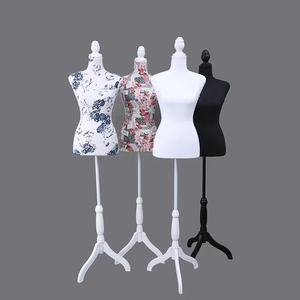A torso mannequin is a dress form replica of the human upper body. Typically made of materials like plastic, fiberglass, or metal, torso mannequin models serve both practical and aesthetic purposes for designers and retailers. The torso mannequin options provide an armature for draping garments during the design and display of clothes in retail spaces. Understanding the variances in torso mannequin design and usage aids buyers in selecting suitable options.
Types of torso mannequin options
Half mannequins or half torsos showcase only front body detailing, lacking backs and sides. Adjustable neck, arm, and waist forms on a half-body mannequin illustrate garment shaping. Full-torso mannequin models present complete 360-degree domestic views. Some stand independently, while others, like the torso mannequin with stand, require base mounting. Kid, junior, misses, and plus-size forms complement the standard small to extensive range. Torso mannequins also come in male, female, and child varieties.
Features of torso mannequin
Dress forms lend three-dimensional life to fashion design concepts. Half-torso mannequin models focus on neckline, bodice, and waist characteristics. Artists drape multiple iterations of overlays, fabrics, and closure options on standing forms. Full figures visualize complete front, side, and back styling details at once. Window and in-store displays employ headless torsos to focus shoppers' attention on garment details and textural elements. Miniature torso models also assist jewelers and crafters.
Torso mannequin design focuses on stability, durability and flexibility. Fiberglass, acrylic, ABS, and polypropylene plastic composites hold up under continual material load stresses. The non-porous finishes of torso mannequin models also resist yellowing and surface deterioration, which are common with resins and rubber materials. Chrome neck, arm, and hip joints enable precise posing and arm canting. Foam-backed metals and plastic bases provide weight and balance. The ideal material of a torso mannequin balance depends on budget, studio space, and display venue.
Torso mannequins serve as indispensable practical tools that bring designs to three-dimensional life. Torso mannequin options span neutral poses to dynamic movement and made-to-measure replication. While base models focus on functionality, customized painting or integrated technology helps torso mannequin models achieve unique style aims. As essential elements of both the artistic process and retail display, understanding torso forms helps creatives invest in the perfect aids.
Caring for a torso mannequin
The smoothed finishes and jointed limbs of torso mannequin models require particular care during transport, storage, and handling. Chipping, scratching, or joint misalignment accelerates wear. Cleaning solvents can damage some material composites. Many mannequins require gentle wipe-downs only. Many torso mannequin models left standing can compress over time, leading to balance issues. Hanging storage helps retain shape but requires robust support. As coveted studio items, protective bags and cases safeguard costly investments.










































 浙公网安备 33010002000092号
浙公网安备 33010002000092号 浙B2-20120091-4
浙B2-20120091-4